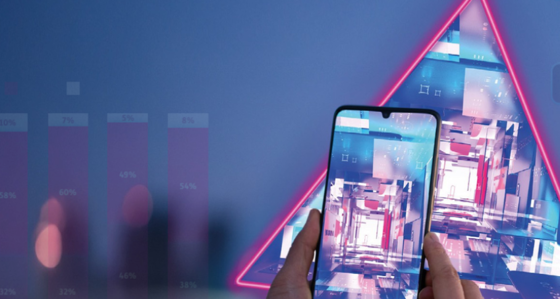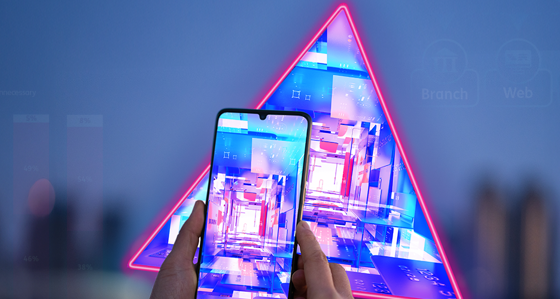
UK payments outlook: the five trends to look out for
4 min read 24 May 2023
It is an exciting and uncertain time for the payments industry both in the UK and globally.
There is a need to balance ‘getting the basics right’ such as: keeping architecture fit for purpose and cost to serve customers at a manageable level, avoiding APP fraud, embedding ISO20022 and meeting regulatory requirements. This is a lot. However, alongside BAU activities payments professionals also need to steer their business to be ‘fit for the future.’ The risk of Big Tech within payments and banking has changed the game, with opportunities for increased customer centricity and new products. New demands for UK payments need to be balanced such as how new payments architecture (NPA) will be implemented in parallel to a move towards central bank digital currencies (CBDCs), the opportunities from distributed ledger technology (DLT) or potential offerings such as embedded finance.
At the beginning of 2023, the UK payments market has already been given a lot to think about:
- In February the digital pound consultation launched with payment service providers (PSPs) being asked for perspectives on digital assets.
- In March the Dear CEO letter from the FCA outlined broader recommendations for PSPs and how they serve their customers.
- In April, the Joint Regulatory Oversight Committee (JROC) provided perspectives on open banking, including promoting non-sweeping variable recurring payments (VRPs).
With so many things to consider at once, this article explores the five key trends and predictions we expect to see over the next 12 months for financial institutions to consider.
Read more insights on Future-Proofing Payments
1) Data will remain front and centre
Data has always been fundamental to the end-to-end payments process. Yet continued innovation from open banking and blockchain technology changes relationships with consumer data. PSPs need to respond to a growing consumer demand for flexibility and increased control over how their data is used. PSPs hold significant amounts of customer data and should make use of this asset, such as through using it to offer innovative products to clients, tailoring to their requirements.
Standardisation of data has been key to interoperability in the payments market and the transition to ISO20022 messaging standards continues. Over the next year there will likely be increased consideration around data standards for digital assets and crypto. The ability to standardise data for these assets will be necessary before any form of mass adoption can be achieved.
2) The conversation around digital assets and crypto will intensify
Standardised data is just one enabler for crypto being used for payments. A key question for the market is “what else is needed for crypto to move from a speculative asset to a payment instrument?” After asking this, a second question remains: “is it even desirable for crypto to be a method for transacting payments?”
For some geographies such as the UK, where faster payments and card rails provide relatively seamless experiences for the end consumer, crypto could be a solution to a non-existent problem. Given individuals and businesses think in fiat currency, not tokenised assets, it is not an easy solution and conversion between both instruments remains challenging.
Yet there are specific use cases and geographies where crypto could provide opportunities. It does not need to be ‘all or nothing’. For example, traditional payment rails could be upgraded to use distributed ledger technology (DLT) to improve cross-border payments. In some specific instances tokenised assets could allow for flow of value in locations where it would otherwise not be possible. As a minimum, CBDC exploration will continue (over 110 central banks now have programmes in this space), and stablecoins could grow in prominence to explore the bridge between fiat and crypto.
3) Cost of living will impact consumer behaviour and market trends
Research by Ordo1 found that 80% of people in the pandemic gave themselves a ‘financial MOT.’ Of those concerned about their finances, 40% of those with direct debits cancelled at least one of these regular transactions. If there are fewer direct debits consumers will likely be paying for more expensive card transactions, which may result in greater demand for account to account payments. One example is variable recurring payments (VRPs), giving consumers increased flexibility and control. Non-sweeping VRPs have been positioned as a breakthrough innovation in the JROC open banking update and it will be interesting to watch them evolve over the coming year.
4) The market will become wary of adoption for adoption’s sake and look to new entrants to prove their scalability
Payments is a technical industry and relies heavily on continuous improvements being made to domestic and international infrastructure. Sometimes technology is the start of the conversation rather than the solution. Discussions begin: “how do we switch to blockchain?” or “how do we open APIs?” The question we should really be asking is “what are the use cases for this technology?”
When the genuine consumer need is clear, use cases can be developed and a business case assessed. The technology that solves a genuine client problem and is commercially viable to the industry can be adopted. Technology is an enabler but should not be a starting point. With the current market pressures, the payments industry will need to be more selective than ever, giving innovations the critical assessment needed before committing to change. The beginnings of this are evidenced by a wave of high valuations for companies specialising in payment innovations, being rapidly reduced. Proving and not just promising scale is vital for lasting impact in the market.
5) Significant value will continue to be driven from payments
Over the past few years, payments has been elevated to an important product. It is a key value driver for payment service providers (PSPs). This is a shift from the past where payments were often an ancillary service that banks offered for low or no cost. The ecosystem is changing, and innovations allow payments to be executed in different ways, whether through new payment instruments such as digital assets or through new journeys such as embedded finance.
Over the next year the conversation around payments will continue to develop with payment professionals grappling with how they can continue to deliver the required service to their customers whilst also exploring and reacting to the new innovations in the market. This will enable them to tap into the real value that can be achieved from this area.
Baringa are working with our clients every day on some of their most exciting payments engagements. Please get in touch if you’d like to discuss.
1 https://ordopay.com/vrp-variable-recurring-payments-the-saving-grace-for-the-modern-age-and-how-to-keep-your-subscription-payments-model-intact-despite-customers-cancelling-their-direct-debit-payments-in-drov/
Our Experts


Related Insights

10 tech trends reshaping financial services in 2026
We explore ten interconnected themes that will define success in 2026 and beyond—covering how firms can modernise architecture, embed AI responsibly, strengthen resilience, and optimise technology investment.
Read more
Legacy Tech Infrastructure Remains a Challenge for Banks as Demand for Digital Banking Grows
Legacy technology systems and infrastructure may be keeping banks from meeting growing customer demand for digital banking, according to new research from Baringa, a leading global management consultancy.
Read more
Baringa retail banking survey: legacy tech, lost loyalty
Legacy tech is eroding customer loyalty. Discover why over a third of customers switched banks, and what leaders must do to close the digital experience gap.
Read more
Making AI work for your organisation in financial services
AI requires strategic planning, risk management, and governance. Baringa helps deliver value by identifying impactful use cases and driving outcome-focused decisions.
Read moreIs digital and AI delivering what your business needs?
Digital and AI can solve your toughest challenges and elevate your business performance. But success isn’t always straightforward. Where can you unlock opportunity? And what does it take to set the foundation for lasting success?